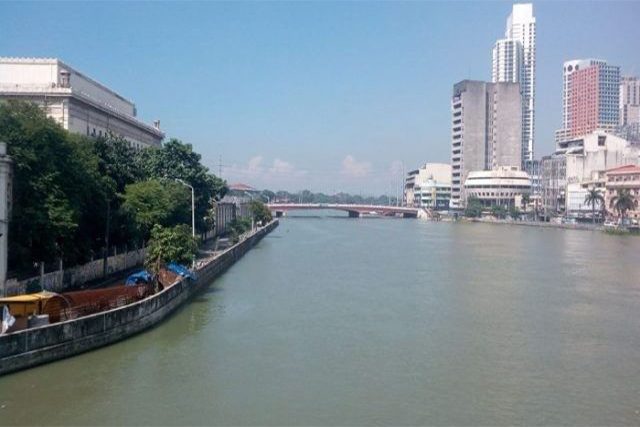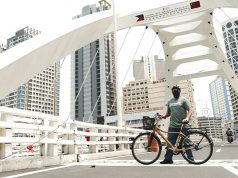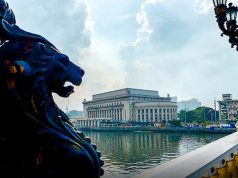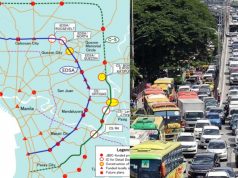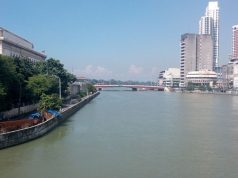An architectural firm denied signing a contract to serve as the consultant for building the controversial Pasig River Expressway (PAREX).
Palafox Associates and Palafox Architecture Group issued this clarification after the expressway’s construction kicked off last September 24.
PAREX is a 19.37-km elevated expressway that was supposed to connect the eastern and western portions of Metro Manila.
It is eyed to have six lanes that would improve the traffic in the bustling areas of Rizal, Cainta and Marikina City should it be completed.
The San Miguel Corporation (SMC) is financing this P95-billion project.
Last September 21, it was reported that the SMC said it hired the firm of Felino A. Palafox, Jr., a well-known architect and green urbanism advocate, to participate in building the PAREX as a sustainable infrastructure.
The Palafox firms, however, denied that their involvement pushed through in a statement on September 26.
“Palafox Associates and Palafox Architecture Group have not signed any contract to be the consultant of the Pasig River Expressway (PAREX),” they said.
“While it is true that the San Miguel Corporation (SMC) and Mr. Ramon Ang have reached out to our principal architect and urban planner Felino “Jun” Palafox Jr. to introduce green architecture and green urbanism principles in SMC infrastructure projects, this has never been formalized specifically for the PAREX project,” they added.
Palafox firms also expressed their stand on private-public cooperation to address the climate crisis in developing projects.
“Our firm remains strong with our stand that public and private sectors must work together in addressing this climate crisis through multisectoral sustainable development. This means that all economic, social, health and environmental aspects must be carefully assessed before proceeding with any project,” they said.
Moreover, they noted the core values, vision, mission, goals and principles of integral ecology that they follow.
“We hope that this clarifies any misinformation. Thank you,” the statement reads.
‘No to PAREX’ petition
Transport advocates and environmental organizations over the weekend released a collective online petition to oppose the PAREX construction.
[Sign the civil society statement against PAREX]
The Pasig River Expressway will have dire impacts to our economy, democracy and due process, heritage, mobility, health, and ecology.#NoToPAREX! #IlogPasiglahin!
SIGN HERE: https://t.co/91VLs2hNeP
— #NoToPAREX #IlogPasiglahin (@KenAbante) September 24, 2021
Some of the signatories include AltMobilityPH, Move as One Coalition, the Commuters of the Philippines, Greenpeace Philippines, Renacimiento Manila, the International Council on Monuments and Sites (ICOMOS) – Philippines, the Youth Strike 4 Climate Philippines, and PAMANATAG.
“We are concerned citizens, taxpayers, and organizations who disagree with Mr. Ang, and we oppose PAREX. We take this stand for Filipinos past, present, and future and for all citizens of the world who believe that the Pasig River is a living entity that deserves protection and respect,” read the petition.
In the petition, they listed down the environmental and traffic consequences of an elevated expressway over Pasig River.
They also raised these concerns when SMC first inked the deal of the development with the Toll Regulatory Board (TRB) last April:
READ: Critics of Pasig River expressway project ask gov’t to prioritize people over cars
Here are the concerns enumerated:
- PAREX will worsen — not solve — traffic congestion.
- PAREX violates the Philippine National Transport Policy.
- PAREX is anti-poor and will further cement the inequity on our roads.
- PAREX will kill the Pasig River.
- PAREX will erase our people’s bond with the river that is the cradle of our country’s civilization and is a heritage resource of national significance.
- PAREX will kill any effort to restore the beauty of the Pasig River and to make our cities liveable.
- PAREX will worsen air pollution, destroy Pasig River’s ecology, and make Metro Manila more vulnerable to the climate crisis.
- PAREX will inflict at least Php 164 billion in economic, health, and social costs.
To bring awareness to more people, AltMobility PH and Renacimiento Manila released this information in the form of infographics.
AltMobilityPH shared a series of infographics that explained why PAREX will not solve Metro Manila’s traffic problems.
What is PAREX? How will it impact our cities and communities? Three quick reasons why PAREX will NOT solve the mobility crisis in Metro Manila.
Join us in this appeal #NoToPAREX #CommutersNaman pic.twitter.com/0KSaDDeLUI
— AltMobility PH (@AltMobilityPH) September 17, 2021
Renacimiento Manila, meanwhile, enumerated the historic infrastructures that will be affected should the construction of PAREX pushes through.
THREAD: Here’s what’s at stake if Pasig River Expressway continues.#IlogPasiglahin#NoToPAREX
See full list here: https://t.co/FMyWQG9ZRb
Be part of the signatories against PAREX: https://t.co/WNV3hG7fi4Photo courtesy of Yasuda Rainhttps://t.co/zxQHMJVsa9 pic.twitter.com/A5s5i4G5Pt
— Renacimiento Manila | SAVE PH heritage! (@rebirthmanila) September 26, 2021
A Twitter user also cited the possibility that the construction of PAREX could lead to the delisting of San Agustin Church and three other baroque churches in the country namely, San Agustin in Paoay, Ilocos Norte; Nuestra Señora de la Asuncion in Santa Maria, Ilocos Sur; and Santo Tomas de Villanueva in Miag-ao, Iloilo as world heritage sites. He cited the buffer zone set by the United Nations Educational, Scientific and Cultural Organization.
“First, the Intramuros-Binondo Bridge. Now, PAREX. If this SMC project pushes through, it will likely lead to the delisting of San Agustin Church, considering that the entire district is the buffer zone. @UNESCO you may want to take note of this development,” the user wrote.
The China-funded Binondo-Intramuros bridge also made headlines due to the advocates’ fears of San Agustin Church getting delisted as UNESCO world heritage site.
READ: Bridge burning bridges: Why the China-funded Binondo-Intramuros structure is controversial
In his column last September 25, Robert Siy, advocate for sustainable mobility cited that the “historic buildings along the Pasig and within riverside districts such as Intramuros and Binondo may suffer damage from vibrations during construction and from motor vehicles using the expressway.”
“The heritage structures along the Pasig River such as buildings, fortifications, houses — could fill several days of a tourist’s itinerary,” Siy’s column on The Manila Times read.
“Intramuros — with its many schools, churches, public buildings, gardens, moats and walls — was the historic center of Manila during the Spanish colonial period. Five bridges — Jones, MacArthur, Ayala, Mabini and Quezon — each have stories to tell about the construction, destruction and resurrection of our metropolis over the centuries,” he added.
The church defines “the whole of Intramuros as its buffer zone, and it was approved by the World Heritage Center in 2013,” according to the National Commission for Culture and the Arts’ report on the conservation status of the San Agustin Church.
UNESCO said encroachment of this buffer zone set by the UN body could lead to the delisting of the baroque churches. —With Rosette Adel

